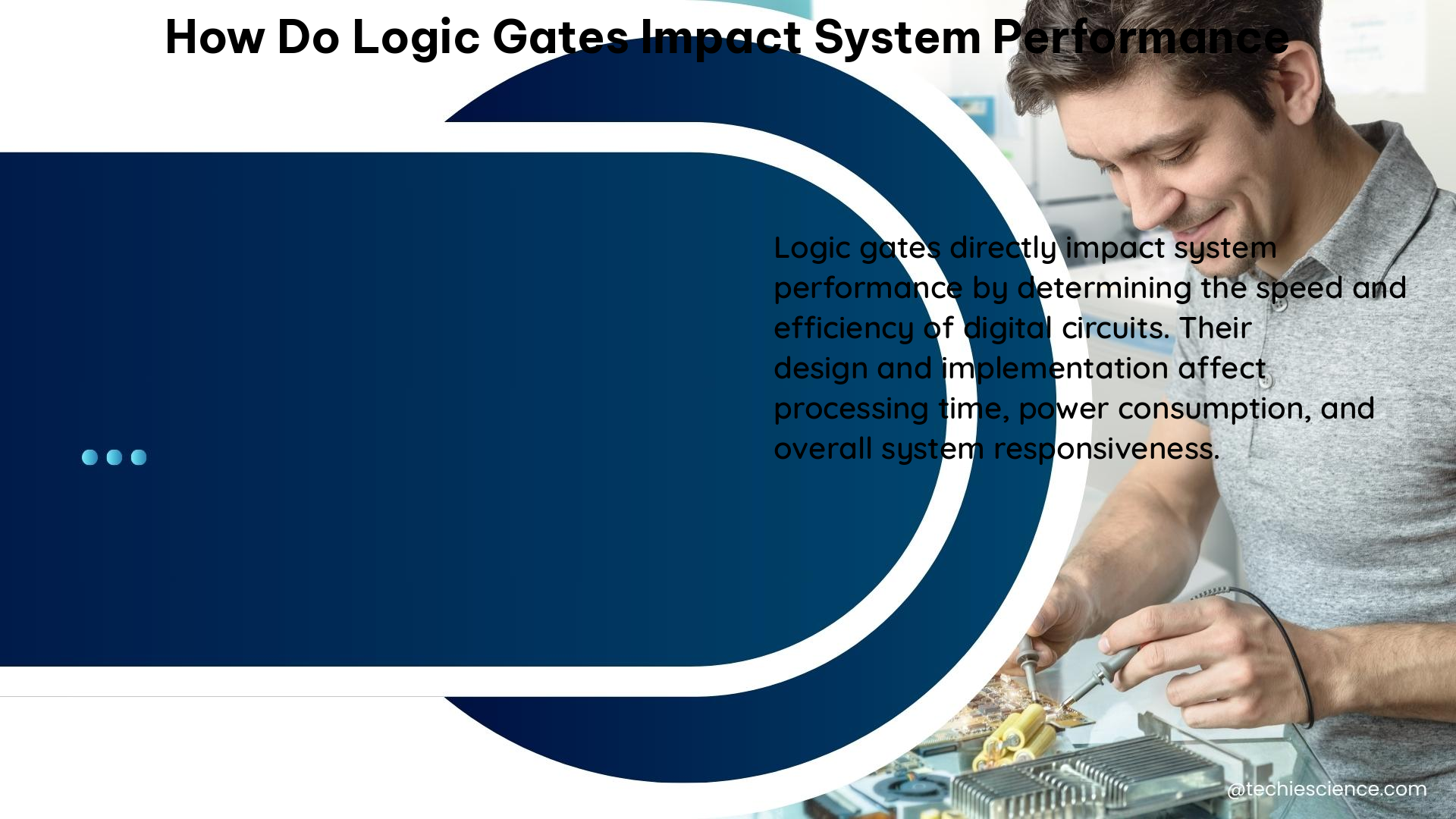Logic gates are the fundamental building blocks of digital systems, and their performance has a significant impact on the overall system’s efficiency, speed, and reliability. These logic gates perform logical operations on binary inputs, producing binary outputs that enable complex computations in digital systems. Understanding the impact of logic gates on system performance is crucial for designing and optimizing digital circuits and devices.
Speed and Propagation Delay
The speed of a logic gate is primarily determined by its propagation delay, which is the time it takes for the output to respond to a change in the input. This propagation delay is influenced by several factors, including the type of logic gate, the fabrication process, and the operating voltage.
- Propagation Delay: The propagation delay of a logic gate is typically measured in nanoseconds (ns) or picoseconds (ps). For example, a NOT gate with a propagation delay of 1 ns can process up to 1 billion input changes per second.
- Frequency Range: Modern logic gates can operate at extremely high frequencies, often in the gigahertz (GHz) range. The frequency-domain ultrafast passive logic NOT and XNOR gates, for instance, can process input signals at 640 Gbit/s.
- Factors Affecting Speed: The speed of a logic gate is influenced by factors such as the transistor technology, the gate geometry, the interconnect capacitance, and the power supply voltage. Advancements in semiconductor fabrication processes have enabled the development of faster logic gates.
Power Consumption

Power consumption is another critical factor in logic gate performance. Logic gates consume power when they switch between logic states, and the power consumption increases with the frequency of switching.
- Energy Consumption per Bit: The power consumption of a logic gate can be quantified in terms of its energy consumption per bit, which is the amount of energy required to process a single bit of information. For example, a logic gate with an energy consumption of 1 femtojoule (fJ) per bit can process 1 billion bits using 1 watt of power.
- Factors Affecting Power Consumption: The power consumption of a logic gate is influenced by factors such as the transistor technology, the gate geometry, the operating voltage, and the switching activity. Advancements in low-power design techniques, such as the use of complementary metal-oxide-semiconductor (CMOS) technology, have helped reduce the power consumption of logic gates.
Error Rates and Reliability
Error rates are also an essential consideration in logic gate performance. Errors can occur due to noise, interference, or manufacturing defects, leading to incorrect output values.
- Bit Error Rate (BER): The error rate of a logic gate can be quantified in terms of its bit error rate (BER), which is the probability of a bit error occurring during a given time interval. For example, a BER of 10^-12 means that there is one bit error for every trillion bits transmitted.
- Factors Affecting Error Rates: The error rate of a logic gate is influenced by factors such as the transistor technology, the gate geometry, the operating voltage, and the environmental conditions. Advancements in error-correction techniques and the use of robust design methodologies have helped improve the reliability of logic gates.
- Eye Diagram Analysis: The BER of a logic gate can be related to the amount of eye opening in the eye diagram, which is a visual representation of the signal quality. A larger eye opening indicates a lower BER and better signal integrity.
Applications and Optimization
The performance of logic gates is crucial for a wide range of digital applications, from microprocessors and memory devices to communication systems and sensor networks.
- Application-Specific Optimization: The design of logic gates is often optimized for specific applications, taking into account the required speed, power consumption, and error rate. For example, logic gates used in high-performance computing applications may prioritize speed, while those used in battery-powered devices may prioritize low power consumption.
- Trade-offs and Compromises: There are often trade-offs and compromises involved in the design of logic gates, as improving one performance metric (e.g., speed) may come at the expense of another (e.g., power consumption). Designers must carefully balance these trade-offs to meet the specific requirements of the target application.
- Emerging Technologies: Ongoing research and development in areas such as quantum computing, spintronics, and photonics are exploring new approaches to logic gate design that may offer even higher performance and energy efficiency in the future.
In conclusion, logic gates are the fundamental building blocks of digital systems, and their performance has a significant impact on the overall system’s efficiency, speed, and reliability. By understanding the factors that influence the speed, power consumption, and error rates of logic gates, designers can optimize the performance of digital systems for a wide range of applications.
References:
- Frequency-domain ultrafast passive logic: NOT and XNOR gates. (2020-11-17). Retrieved from https://www.ncbi.nlm.nih.gov/pmc/articles/PMC7673018/
- Quantitative Characterization of Reconfigurable Transistor Logic Gates. (n.d.). Retrieved from https://www.researchgate.net/publication/342085597_Quantitative_Characterization_of_Reconfigurable_Transistor_Logic_Gates
- Consider that we have an input device keyboard and – Course Hero. (n.d.). Retrieved from https://www.coursehero.com/file/p7pip7d5/Consider-that-we-have-an-input-device-keyboard-and-some-data-from-the-keyboard/
- What is Risk Quantification? The Complete Guide – LogicGate. (2023-07-20). Retrieved from https://www.logicgate.com/blog/what-is-risk-quantification/
- Eli5 how logic gates work and how many of them are needed in a … (2024-06-04). Retrieved from https://www.reddit.com/r/explainlikeimfive/comments/1d80w6s/eli5_how_logic_gates_work_and_how_many_of_them/

The lambdageeks.com Core SME Team is a group of experienced subject matter experts from diverse scientific and technical fields including Physics, Chemistry, Technology,Electronics & Electrical Engineering, Automotive, Mechanical Engineering. Our team collaborates to create high-quality, well-researched articles on a wide range of science and technology topics for the lambdageeks.com website.
All Our Senior SME are having more than 7 Years of experience in the respective fields . They are either Working Industry Professionals or assocaited With different Universities. Refer Our Authors Page to get to know About our Core SMEs.